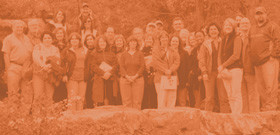The D&L Blog

On June 25th, Lincoln Steward will attempt to bike almost all of the D&L Trail’s 165 miles from Bristol to Glen Summit AND BACK in one continuous ride. Each week until June 25th, we will publish a post or two on Lincoln, what inspired him to take this challenge and how he is preparing for this epic ride. After June 25th, he will fill us in on the result of his ride. Stay tuned!
Nutrition and Hydration
The American College of Sports Medicine says, “Adequate food and fluid should be consumed before, during, and after exercise to help maintain blood glucose concentration during exercise, maximize exercise performance, and improve recovery time. Athletes should be well hydrated before exercise and drink enough fluid during and after exercise to balance fluid losses.”
Just as a car will not operate without gasoline, the human body will not function properly without adequate nutrition. Riding a bicycle burns a lot of calories, and it is critical to keep the body fueled, otherwise it will become so tired that it will collapse under fatigue.

So what do you eat? This is another one of those topics in which people’s opinions will vary greatly. The two main components of food that your body needs are carbohydrates and protein. Carbohydrates are the energy that your muscles burn. Protein is what helps to repair and re-build your muscles. Every human body is a little different, so what you need to eat during exercise activity is learned through trial and error, until you find out what works for yourself. It is important to be fueled up before an activity, maintain energy levels during activity, and eat afterwards so that your body can recover and repair itself.
I personally prefer to eat real, solid food while I am riding (as opposed to processed energy gels or bars). In my food stores you will find some fruit, such as bananas, oranges, or raisins. You may also find some granola. One of my favorite snacks during a ride is crunchy peanut butter and honey rolled in a tortilla. A lot of other athletes think I’m crazy for this, but I love to eat ice cream in the middle of a long activity. During an extremely long activity, I will absolutely need to stop briefly and refuel with more of a meal than a snack. For these times I prefer a burrito, a sandwich of some sort, or a few slices of pizza.
Water is the other element that must be replenished during physical activity of any kind. Sweating is an obvious source of water loss, but even on a cold day, the moisture expelled through breathing accumulates to a measurable amount of water that must be replaced in your body. During a ride I will try to remind myself to drink small sips of fluid about every ten minutes to maintain a good level of hydration.
It’s not just the water, either. You may notice that sweat tastes salty. This is because your body also excretes electrolytes (salts, sugars) as it sweats, and these need to be replaced as well. Your blood is composed mostly of this water/electrolyte solution, and it is this solution that enables your brain to transmit electrical signals to your muscles. When the fluid levels drop too much, or the electrolyte concentration becomes too low, these signals don’t get through, and your body will literally not do what you want it to. To make sure these levels are maintained properly, I switch between plain water and an exercise electrolyte mix such as Skratch or Gatorade.
While people may not like to talk about the subject, a person’s urine is an excellent indicator of hydration levels. The less clear the color of this bodily excretion, the more dehydrated a person is. If you aren’t stopping to relieve yourself at all over the course of a long day, this could mean you are approaching dangerously low fluid levels in your body, and need to drink.
Thirst is not a good hydration indicator. A rule of thumb I was taught is that if you are extremely thirsty, it means you have waited far too long to drink. It is necessary to hydrate before you exercise, while you are exercising (before you feel thirsty), and after you are finished exercising.










